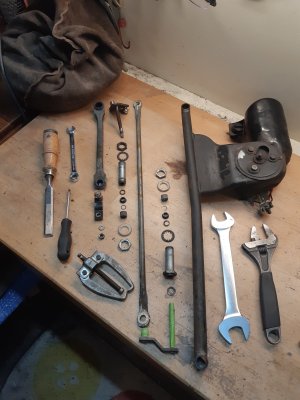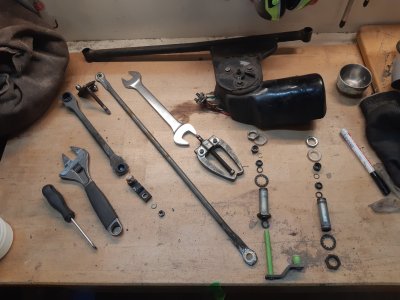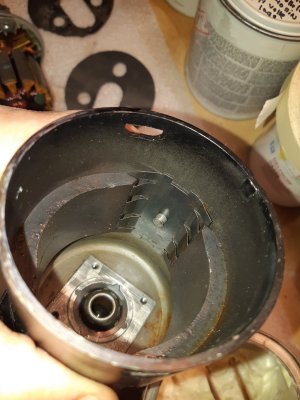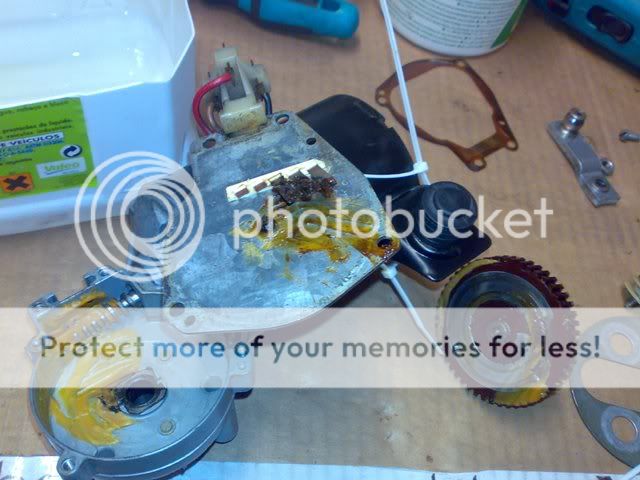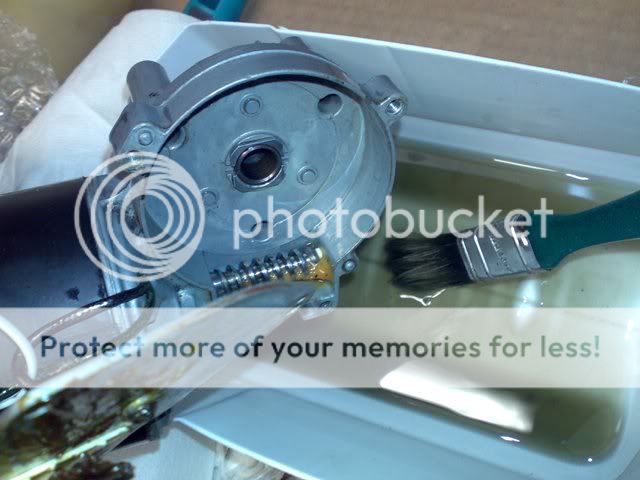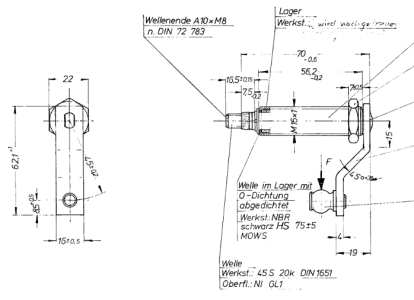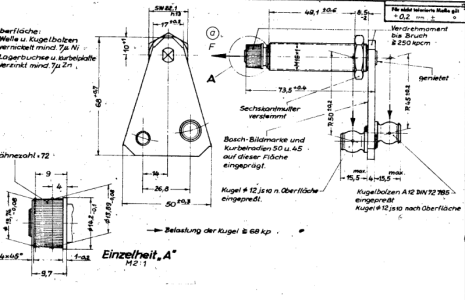Dismanteling is fairly easy:
The wipers flip off the spline when the small tab under the arms is pushed.
(I believe post 10/1973 wipers have a securing nut instead of the small tabs?)
2 thin nuts on the window edge twist off, dropping the system. under the thin nut is a chrome domed ring with an alu washer that contacts the paint. keep track of the order of the parts.
The rubber buffer on the bracket on the motor is the 3rd point, that basically defines the pitch of the system, and therewith influences the pressure of the wipers on the window.
Disconnect the wires and the system just drops out.
just a side note on the tech drawing and the parts: it seems that although parts 19&20 are drawn, they are actually never installed on our linkage systems. we think it is an error in the drawing. A few memebers checked, and also their parts do not have 19&20 mounted.
(reference:
https://e9coupe.com/forum/threads/wiper-linkage-missing-part-in-my-system.35976/#post-302895)
System on your workbench looks like this. (it's E9; E3 systems have a black tube with a kink in them - the rest is basically identical)
Now you see 2 white plastic rings, and below them a thin nut again. Unscrew the nut, and the pivots drop from the black metal frame. Below the frame is a toothed spring ring and a 3rd flat nut:
Now do the same with the other spindle.
Then it's time to remove the linking bars, but before doing so, first note the relative position of the small arm on the motor relative to the motor's axis, as such:
The arm A and Arm B in my pics are almost in perfect alignment when in the rest position. I can't say if that's how it should be, it's just what worked for me during 4 years of daily driving.
I used a bearing puller to get the arm A off, and also used it on the staked splined ends on the tops of the spindles. Make sure you pull the splined part, and not the small plastic edge that is just 2 mm lower
The spindles have quite some parts, so do take care of al that comes out:
splined cap + ring/seal and plastic collar dust cap
Now you can pull the threaded bushes off the pin. The triangle part usually has a quite badly rotten pin, as it sits more in the rain zone under the grille:
Another wave washer is found at the base, between the arm and the threaded tube. Once the pin is out, another dust seal can be removed:
As I wanted to re-Zinc everything, i opted to unscrew the thin nut as well. I used soft Alu jaws in my vise to not damage the threads. I then noted how far on the threads it was located: 5 and 3/4 turns and it's off. (and thus needs 5 3/4's to get back in the right position). Some threaded tubes have thin nuts that are press-locked in place like these: I wouldn't try to seperate them, and just rezinc them as an assembly - this one was a used replacement part.
Notice: inside the tubes are smooth glide bearings: clean the inside and check their condition.
I had one tube with a broken bearing, thus i needed a used replacement part. I sourced a used sleeve with intact bearing through our lovely site.
In the pic below you see from R to L a fresh threaded section with it's slide bearing still inside. In the middle is a threaded tube but the bearing is out (was broken, see small piece) Left is a fresh spindle, with the slide bearing placed on the pin: this is also where the rotation occurs between the 6mm pin and the inside of this smooth glide bearing.
I think this slide bearing can be replaced with a generic off the shelf slide bearing: i didn't measure it at the time, but my guess is that a 6mm ID, 10mm OD and 10 mm high smooth bronze oil filled bearing will do just fine.
Then it is on to the separation of the ball joints; they are just press fits. I used 2 different tools to flip the off:
A 24 mm spanner between the short arm and the triangle plate and a twist released that side.
I used a bearing puller to push the ball joint of the Arm A from the long tube:
And here's the resulting parts pile:
The Motor can further be separated from the frame by undoing the 3 bolts. The top side has 3 discs. Note the electrical tab under the bottom screw:
Underneath are 3 white plastic bushings and a rubber sheet:
The motor separates with 2 flat screws, allows for inspection of the carbon brushes. (would anyone know if they are available somewhere? these are typically also wear parts)
The rotor has 2 white plastic caps, 1 on both ends. Don't loose em.
The connector side also has a casing that unscrews with 4 flat screws, underneath is 50 years old grease waiting to be replaced. This is also where the 3 drag contacts are located.
Inspect the gear for missing teeth or excessive wear; not sure what excessive is, but the teeth on my gear worked quite ok before pulling it apart (why did I even do this ...?) You can lift out the gear and clean it. I reinstalled with fresh grease afterwards.
Next up is clean, zinc & rebuild.

